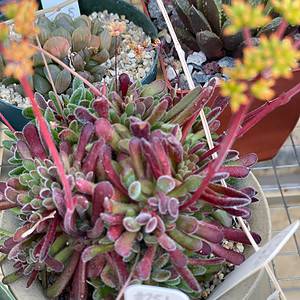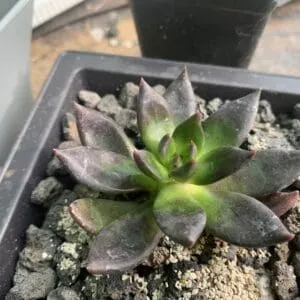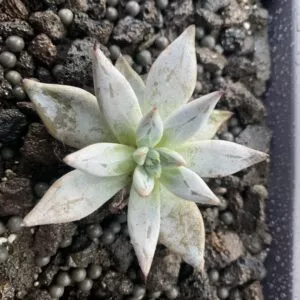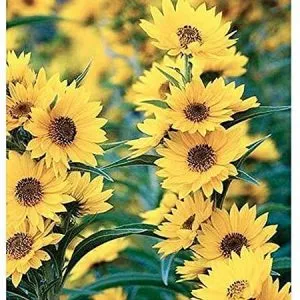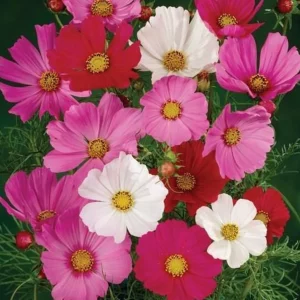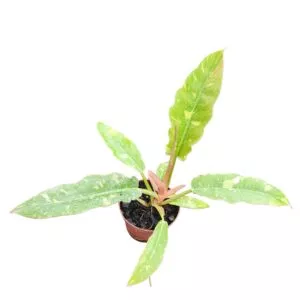No products in the cart.
Table of Contents
If you want a stunning variety of Alocasia, get your hands on this gorgeous Green Velvet Alocasia. While keeping it flourishing is a challenge, we know that with our care tips, you can do it.
What is Alocasia micholitziana frydek?
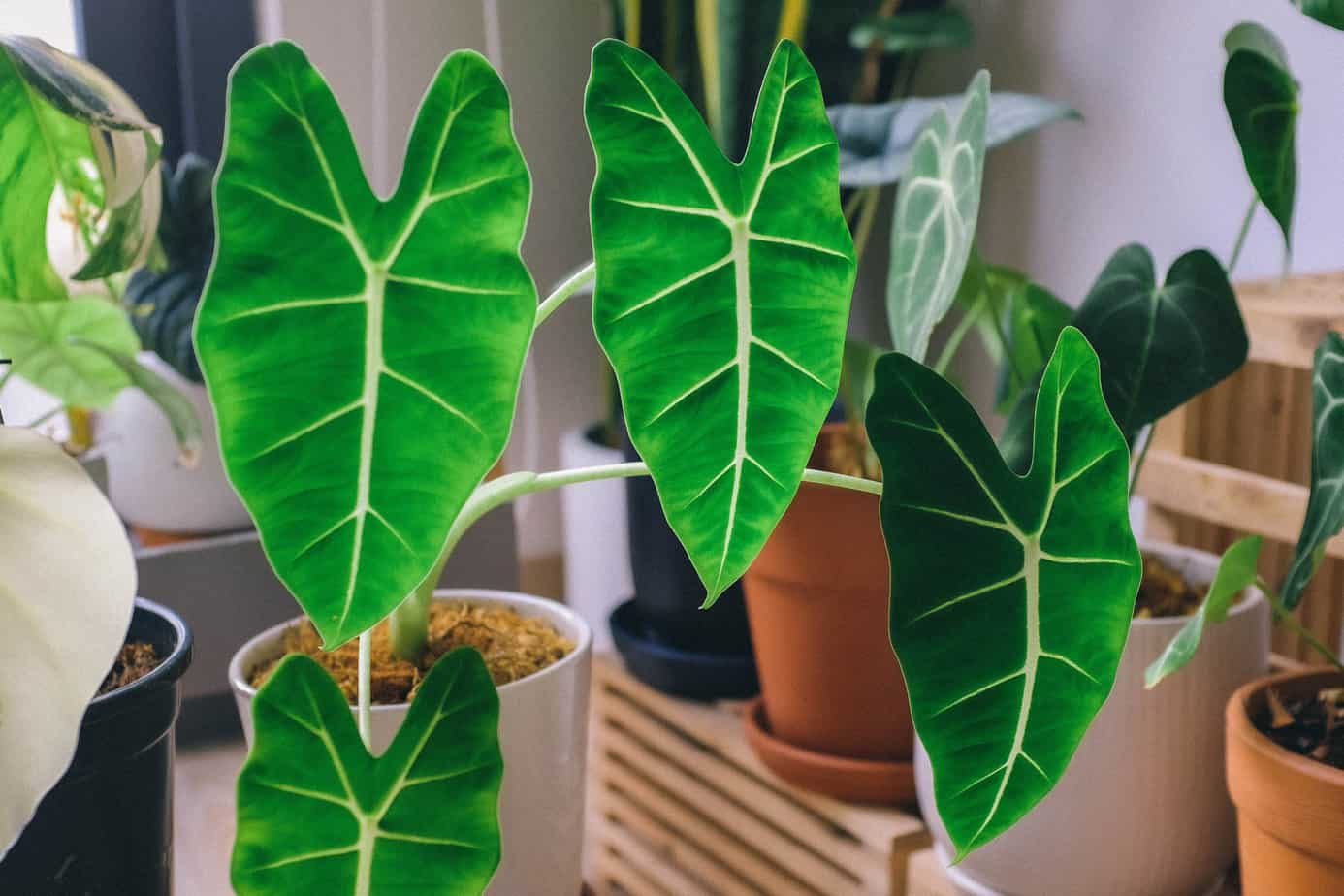
This stunning tropical species makes for a tremendous perennial indoor plant with its large arrow-shaped leaves.
The veins on the foliage are white and thick, and the common name is green velvet or Alocasia frydek.
When provided with enough light and humidity, it produces white fragrant flowers but is grown for its spectacular foliage.
But the best part is its compact size, which makes it suitable to place on windowsills, tables, or shelves. The foliage is an eye-catcher that captures all attention.
Another known fact is that the plant is relative to the elephant ear plant and grows up to four feet high.
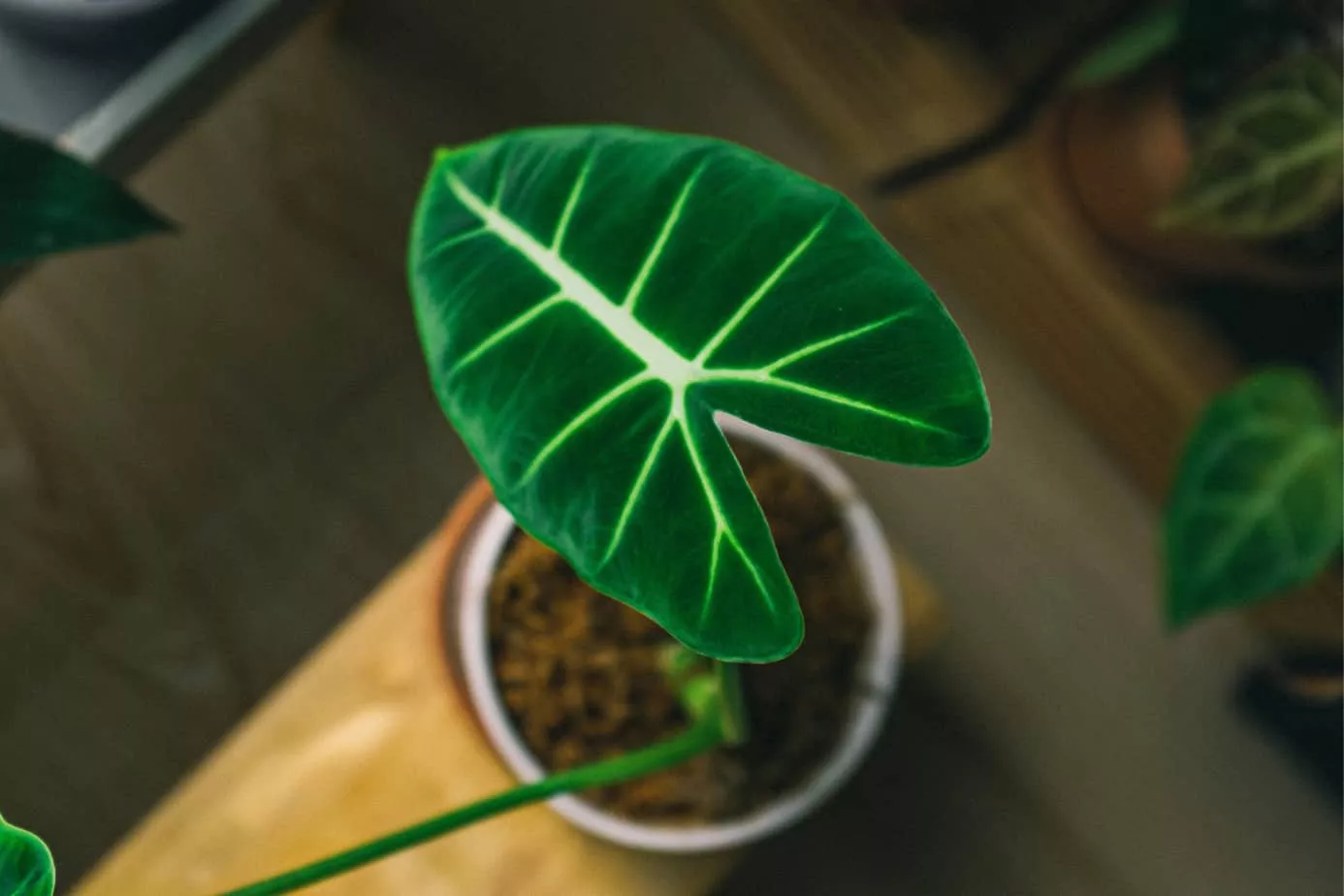
This plant is native to the Philippines and needs warm yet humid tropical conditions to flourish. It makes for perfect indoor or outdoor plants.
Alocasia Frydek Care Table
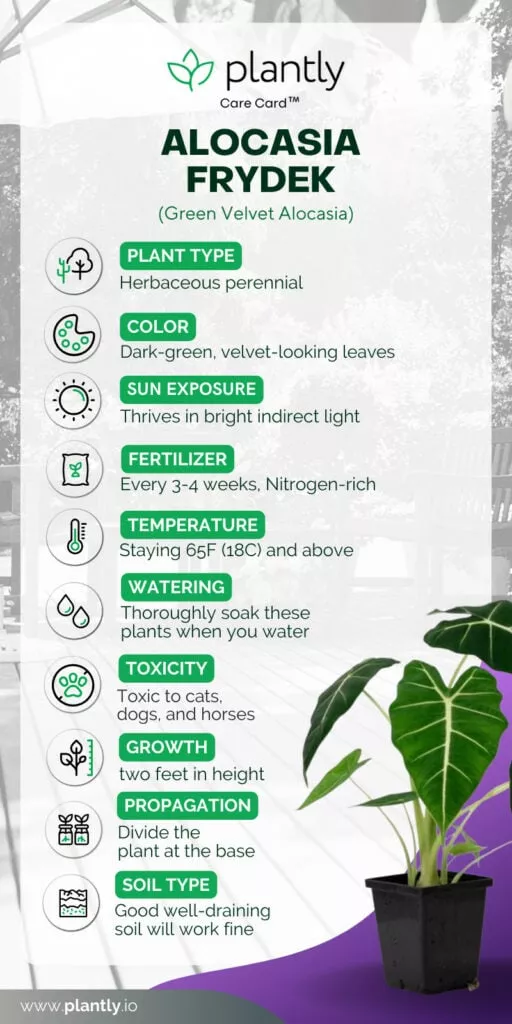
How to Care for Green Velvet Alocasia
Best Soil Mix
Your Alocasia frydek needs moist, well-draining, fertile soil to thrive.
Providing your plant with suitable soil ensures that the water drains freely. Keep the pH ideal between 5.5 to 6.5.
If left unattended, getting root rot can lead to fungal diseases, killing your poor houseplant. So, the best is to leave the soil to dry out between watering. The problem is your Alocasia green velvet loves water. So, try to strike a balance.
Provide your plant with enough drainage holes and leave excess water to drain out of the container.
-
$18.00Sold By: Beauties & Beasts
In stock
Succulent- Crassula pubescens subsp. pubescens
Only 2 available and it’s in 2 people’s basketRated 4.83 out of 5 based on 24 customer ratings00Sold By: Beauties & Beasts -
Free Shipping$35.95 – $40.95Sold By: A&K Plants
In stock
Peperomia Prostrata ‘String of Turtles’ | 4-inch pot
Only 11 available and it’s in 1 people’s basketRated 4.95 out of 5 based on 66 customer ratings00Sold By: A&K Plants -
$10.00Sold By: Emerald Dragon Greenhouse
Only 1 left in stock
Affinis Black knight
Rated 5.00 out of 5 based on 15 customer ratings00Sold By: Emerald Dragon Greenhouse -
$35.00Sold By: Emerald Dragon Greenhouse
$40.00Only 1 left in stock
Ungelica “Devils Claw”
Rated 5.00 out of 5 based on 15 customer ratings02Sold By: Emerald Dragon Greenhouse
Lighting Needs
While providing it with moist soil, ensure your tropical plant receives bright indirect light, too. Thus, it needs at least four hours of direct sunlight during the morning.
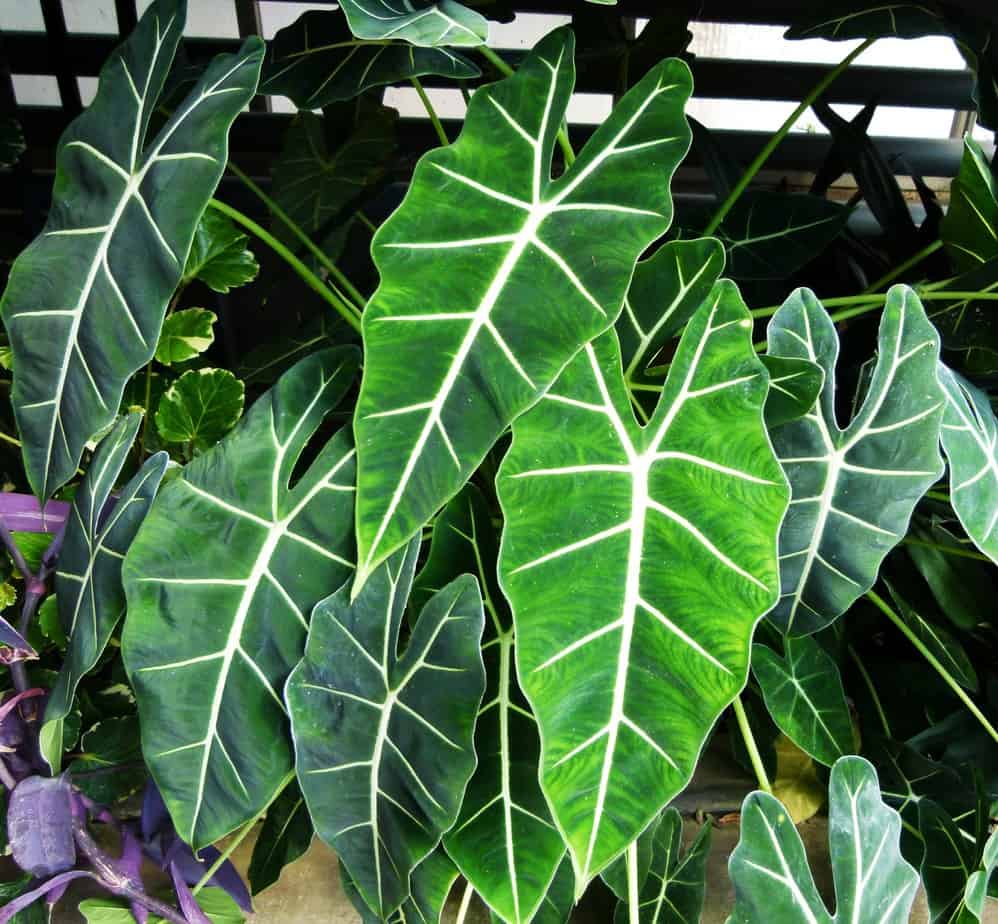
Hence, a perfect location for your green velvet plant is an east-facing window where it can enjoy the morning sun.
Meanwhile, in the afternoon, it only needs indirect light to flourish. If you plan to place your green velvet plants at a south-facing window, provide it with some sheer curtains.
Exposing the leaves to bright light will result in scorching. On the other hand, too little light makes the leaves fade.
Watering Needs
For proper Alocasia frydek care, the soil needs to remain moist. That means you should be faithful when it comes to watering. You can water your plant before the potting mix dries out.
Start with thorough watering and leave the container to stand in the sink for the excess water to drain.
Your Alocasia green velvet will go dormant with infrequent watering, so do not skip watering. Also, consider your climate and reduce your watering schedule in winter.
Temperature & Humidity Needs
As your plant comes from the tropics, it flourishes in warm temperatures between 60-80°F ( 16°C – 27°C). Do not let the temperature go below 60°F (16°C). Your plant will not be happy.
The same applies when growing your Alocasia frydek outdoors. We recommend bringing it inside when the temperatures drop, as it does not enjoy cold temperatures.
One thing your plant loves, whether it’s treated outdoors or indoors, is a highly humid environment of more than 50%. Humidity is essential to help those bright white lateral veins stand out on the green leaves.

You can use a humidity tray or humidifier or place your Alocasia species with other humidity-loving plants.
If the leaves show signs of brown leaf tips, you know your Alocasia plants need moisture, and using a pebble tray does the trick.
Fertilizing Your Alocasia Frydek
In spring and summer, you can provide your Alocasia frydek with a balanced diluted fertilizer every two weeks.
A feed of 5-5-5 or 10-10-10 is fine and will help with new growth in the stems and induce flowering.
Propagation
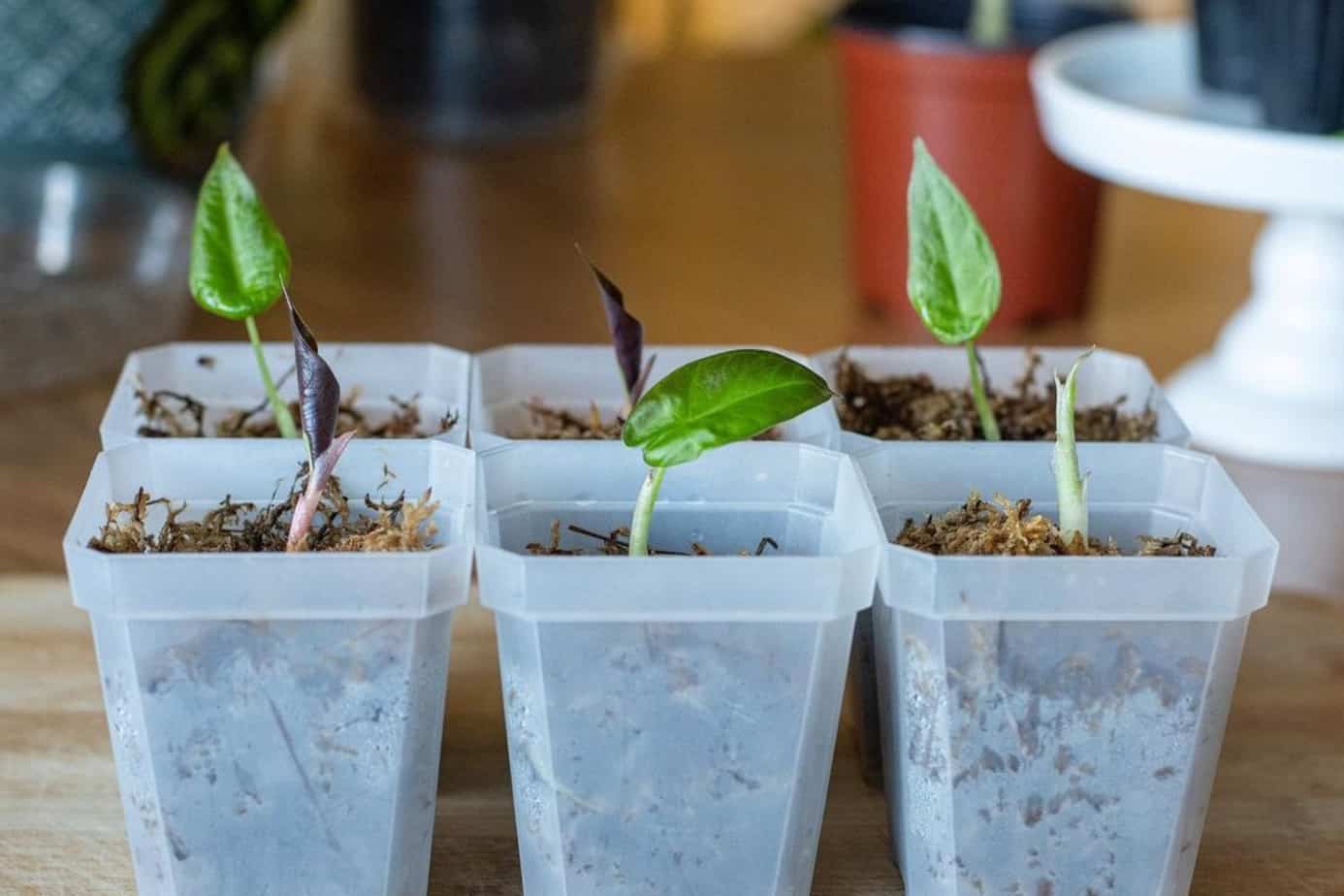
The best time to propagate Alocasia frydek is in spring and summer. At this time, your plant is not dormant and is actively growing. You can use two methods, and we will look at both division and using bulbs.
Division
The method is simple by following some steps here:
First, remove your Alocasia plant from the container.
Next, remove the excess soil around the roots.
Now, look for a section on the mother plants with multiple bulbs or corms to divide.
Next, prepare peat-based potting mix in separate pots for the host plant and the divided sections.
Water well and leave them standing in bright indirect light.
-
Free Shipping$8.36 – $8.98Sold By: CZ Grain
In stock
Giant Maximillian Sunflower Seeds – Perennial Sunflower – Made in USA
Rated 4.60 out of 5 based on 156 customer ratings00Sold By: CZ Grain -
Free Shipping$7.99 – $14.29Sold By: CZ Grain
In stock
Cosmos Flower Seeds, Sensation Mix Color Seeds – Non-GMO Seeds – Ships from Iowa, USA
Rated 4.60 out of 5 based on 156 customer ratings00Sold By: CZ Grain -
$40.00Sold By: PotHedz Plants
In stock
Philodendron Ring of Fire
Rated 4.96 out of 5 based on 106 customer ratings00Sold By: PotHedz Plants -
Free Shipping$18.00Sold By: Bay Urban Habitat
In stock
African flag aka Chasmanthe bicolor flower bulbs
Sold By: Bay Urban Habitat
Bulb Propagation
When your Alocasia frydek grows, it produces bulbs under the soil. To help with new growth, you can choose bulbs with or without roots.
You can do this when repotting Alocasia frydek by separating the bulbs from the mother plant’s roots.
It does not matter if you end up with bulbs that have roots or not. But if the bulbs feel mushy, throw them away.
Place the bulbs in well-draining soil and keep them moist, but never overwater.
You can water the potting soil before it dries out.
Place a clear plastic bag over the container to create humidity for your plant.
Open the bag every few days to provide airflow, and you will notice the bulbs growing roots and a stem in about four weeks.
Once you see the stalk growing with leaves, you can remove the plastic bag and care for it as usual.
Overwintering
It’s common for indoor Alocasias to lose all leaves and go dormant in winter. Don’t worry if it seems dead when it gets cold out. As long as the bulb stays firm and alive, new leaves will emerge in spring.
When dormant, only water when the top half of the soil is dry. Don’t fertilize much, either. Once new growth starts in spring, resume regular watering.
Alocasia Frydek Varieties
You can find different varieties of tropical plants that might interest you, as seen here.
Variegated Alocasia Frydek
The alocasia frydek variegated is a cultivar of the original alocasia frydek. This is a rare plant with stunning green, velvety leaves with yellow and white variegation, making this plant gorgeous.
African Mask Plant
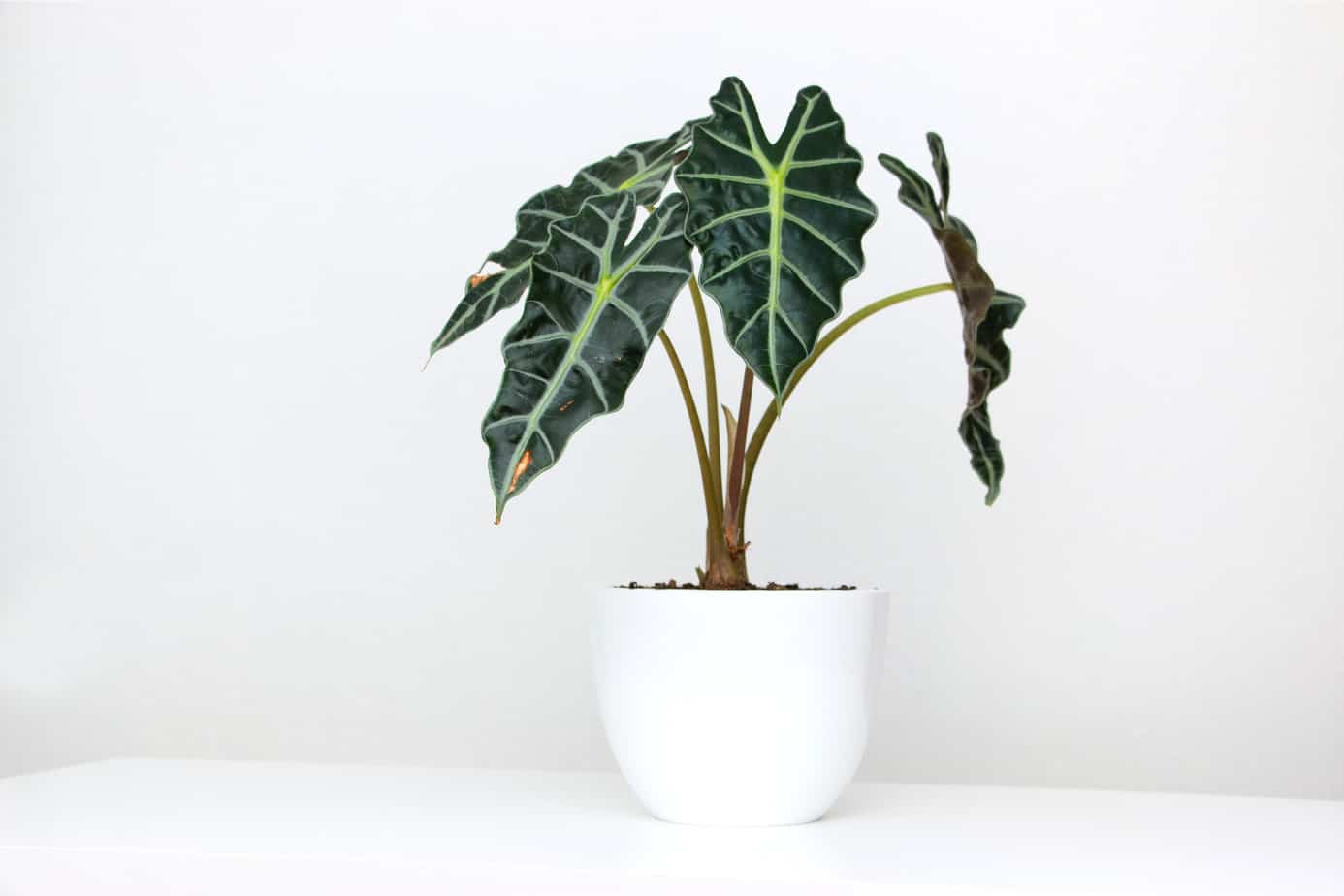
The African mask plant has many species from Southeast Asia, India, New Guinea, and the Philippines. The tuberous perennial holds broad-shaped leaves, and some even have edible parts. Many of these tropical plants have a mix of spadix and spathe. Many get confused, calling it a flower.
Alocasia Albo‘Variegata’
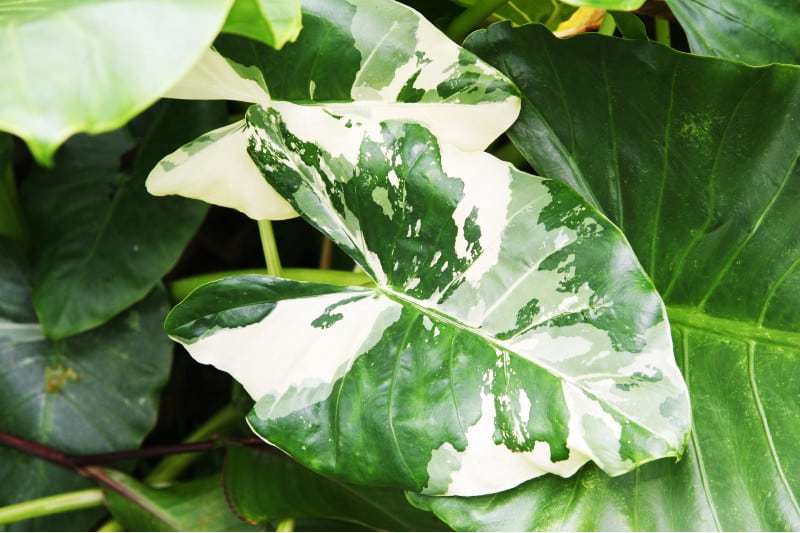
This variegated alocasia is a rare plant and makes for a beautiful houseplant. It’s green; large leaves have a variety of white covering one half of the leaf. In contrast, other cultivars have yellow or golden-yellow variegation.
Alocasia amazonica ‘Polly’
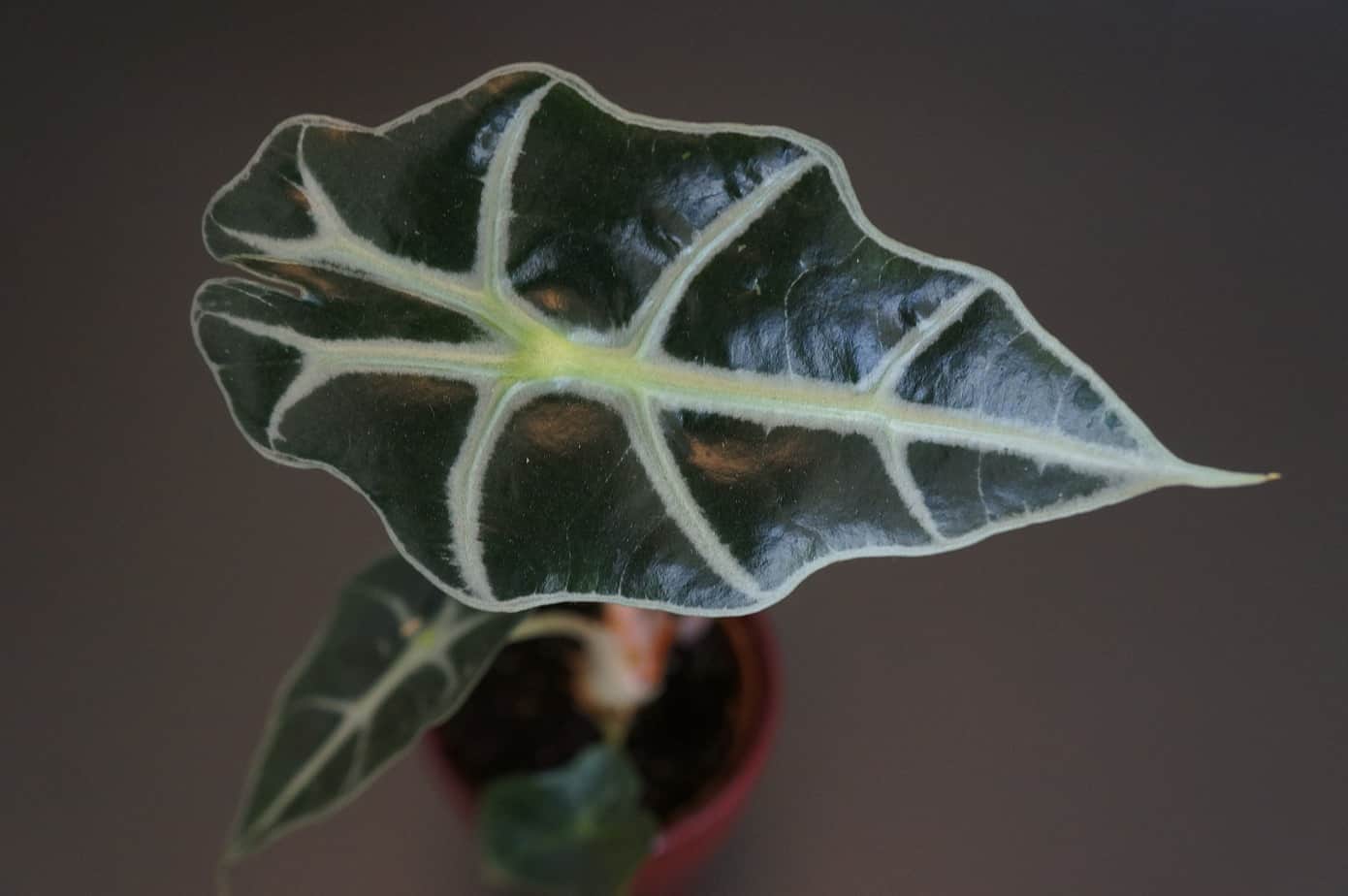
The Alocasia Polly is a compact hybrid with large dark green leaves shaped like a shield or arrow. The foliage has undulating edges with thick white veins; occasionally, it will flower.
Alocasia Frydek Diseases and Pests
Okay, we must say it: the Alocasia micholitziana frydek is a finicky plant. Even if you care for this stunning plant, at some stage, it gets stressed. Here are some common problems you can face growing your plant.
Spider Mites
You don’t want to see this infestation on your green velvet plant. These pesky critters live on the underside of the leaves. They can range in color from pale to red and are very small.
You notice small webs with yellowing leaves that go unnoticed until late. The best way to detect them is by using a white piece of paper underneath the foliage and giving it a shake.
The insect thrives in dry climates, and increasing the humidity can help. You can provide your plant with a pebble tray or use a humidifier.
Furthermore, using a wet cloth or sponge, you can wash your plant from the leaves to the stems daily.
Use a cotton swab with rubbing alcohol to kill the insect and remove the infested leaves. Alternatively, you can use neem oil to remove them diluted with water.
Alocasia Frydek Droops
Getting down to the root of this problem is tricky, as it can be from overwatering or underwatering.
We recommend you first test the soil line to see if it is dry or not too soggy with the ground sticking to your finger.
Hence, if it is too dry, water your plant well; if you are stuck with soggy soil, leave it to dry out completely.
Brown Leaf Tips
Brown tips on the leaves lack humidity, and increasing the moisture around your plant helps. You can place your Alocasia frydek with other humidity-loving plants grouped.
Alocasia Frydek is Dormant
When stressed, your green velvet alocasia can go dormant as it has been too dry. But your plant also goes dormant in the winter months. So it is best to check the climate and time of the year to find out what is causing the problem.
Green Velvet Alocasia Losing Leaves Regularly
It can be typical with immature plants as they lose older leaves to produce new ones. The reason is that the stalks expand all the time.
Hence, smaller leaves fall off, and they will maintain their leaves once they mature. But another concern is overwatering your plant.
So, check to see if there is no soggy soil, and if there is, leave it to dry.
Yellow Leaves or Black Spots
Yellow leaves indicate overwatering, but the soil dries fast, and you are not providing enough water. Do the finger soil test to determine what the cause could be.
If the soil is moist and not soggy, it can mean you need to adjust your fertilizing as the plant is stressed. But if you notice a yellow halo with spots, it can be a fungal disease from overwatering.
Another concern is that it can be root rot, and it’s best to remove your plant to check the roots. Removing the disease’s roots and providing your Alocasia frydek with fresh soil can help.
Frequently Asked Questions
The green velvet plant thrives in the topics and loves the humidity and temperature indoors. Hence, it makes for a great indoor plant than planting it outdoors.
Drooping foliage can result from over or underwatering your Alocasia plants. The best is to check the soil to see if it is soggy or to dry and adjust your watering schedule as needed.
Growing the frydek bulbs is simple by following these steps:
First, remove your plant from the container and separate the bulbs from the mother plant’s roots.
Take a container with well-draining soil and make it moist but not soggy.
Plant the bulbs in the soil and water them when it dries out.
You can cover the bulbs with a plastic bag to provide humidity but keep opening the bag to provide your plant with the airflow it needs.
When you notice new plants growing, you can remove the plastic cover and care for it as usual.
The variegated alocasia frydek is a striking tropical plant known for its large, green, velvety leaves with prominent white veining and variegation of white and yellow on its leaves. It is a variegated cultivar of the commonly grown Alocasia ‘Frydek. This alocasia variety thrives indoors in bright, indirect light and requires consistently moist soil.
Alocasia rrydek is a moderately fast-growing tropical plant, typically putting out 3-5 new leaves annually. Under optimal bright light conditions, warm temperatures, and consistent moisture, alocasia frydek can grow over 1 foot per year.
Whether you want to buy, sell or reach out to other plant enthusiasts, Plantly is the right place to be!
-
$18.00Sold By: Beauties & Beasts
In stock
Succulent- Crassula pubescens subsp. pubescens
Only 2 available and it’s in 2 people’s basketRated 4.83 out of 5 based on 24 customer ratings00Sold By: Beauties & Beasts -
Free Shipping$35.95 – $40.95Sold By: A&K Plants
In stock
Peperomia Prostrata ‘String of Turtles’ | 4-inch pot
Only 11 available and it’s in 1 people’s basketRated 4.95 out of 5 based on 66 customer ratings00Sold By: A&K Plants -
$10.00Sold By: Emerald Dragon Greenhouse
Only 1 left in stock
Affinis Black knight
Rated 5.00 out of 5 based on 15 customer ratings00Sold By: Emerald Dragon Greenhouse -
$35.00Sold By: Emerald Dragon Greenhouse
$40.00Only 1 left in stock
Ungelica “Devils Claw”
Rated 5.00 out of 5 based on 15 customer ratings02Sold By: Emerald Dragon Greenhouse
